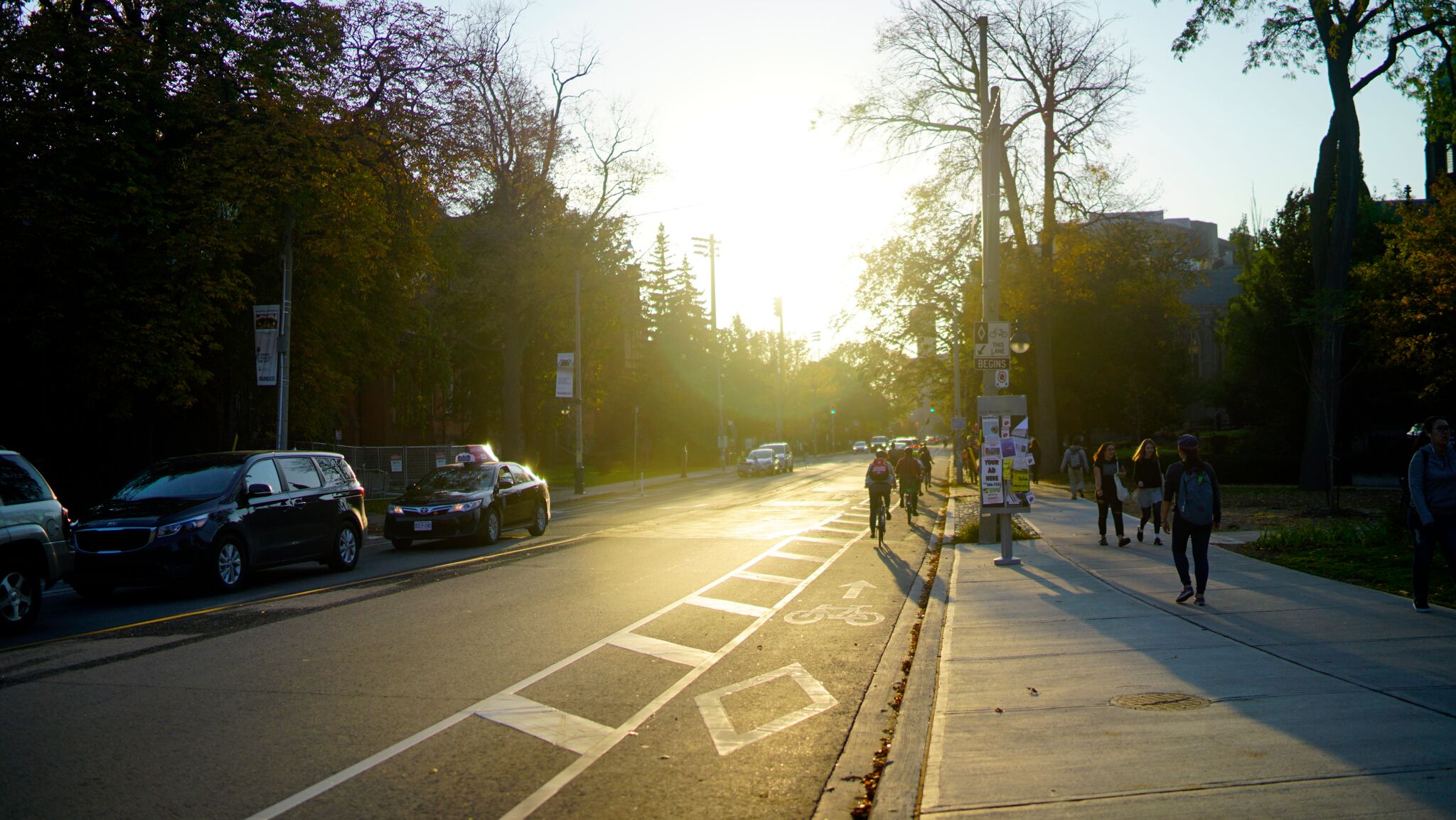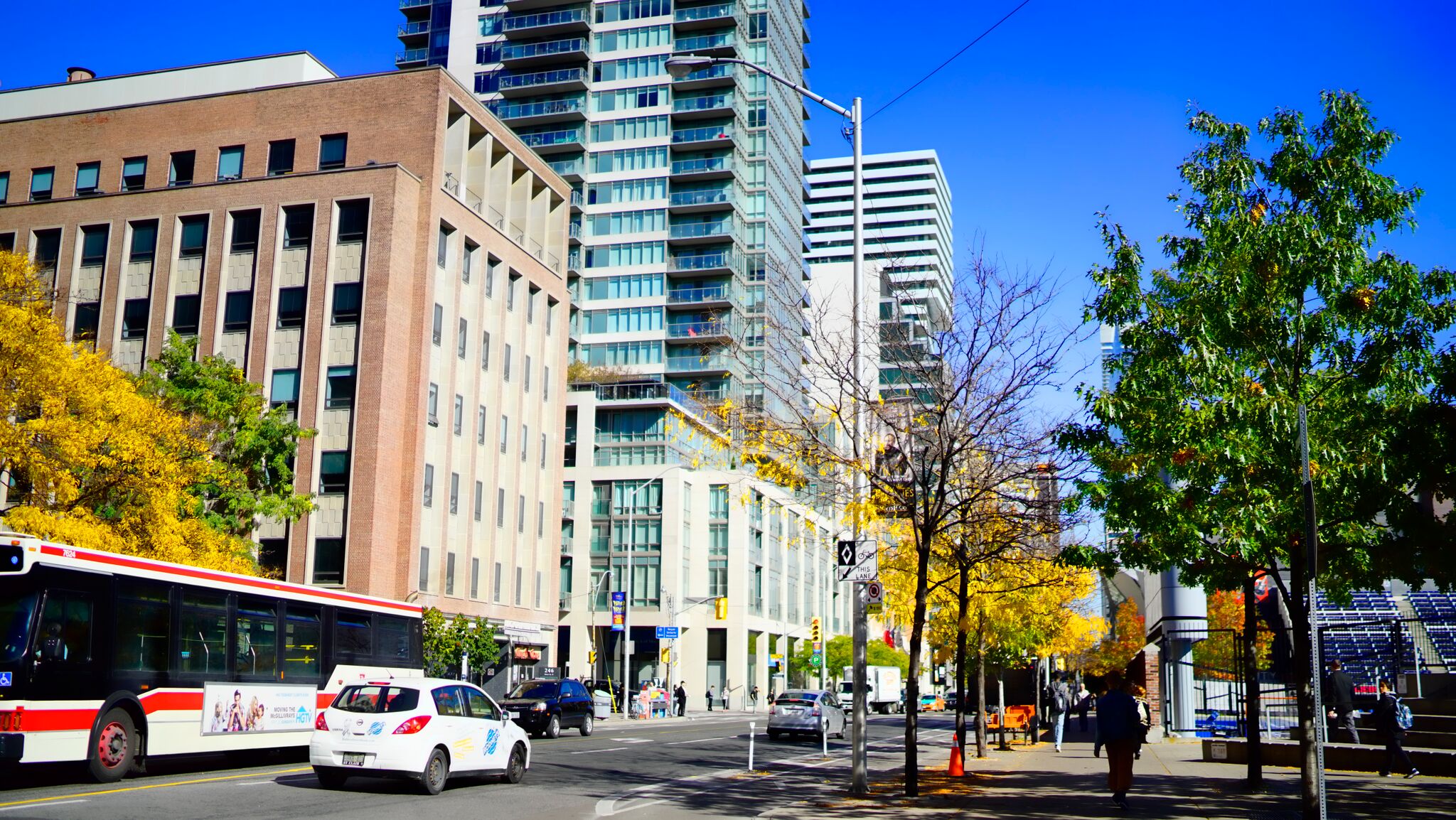Cyclists: the real Toronto vigilantes
How the new bike lanes on Bloor St. West contribute to a more social and safe environment on the streets
As I was navigating between PATS Korean Super-market and Bulk Barn last Thursday, it struck me that there is something quite attractive about Bloor Street West on weekday evenings. The noisy weekend crowd, often found lined up outside of bars and pubs or moving through the sidewalk traffic in large packs, has yet to formulate. The streetscape’s less attractive aesthetic features, like loose litter and grime, are hidden by the early nightfall. Most impressive are the sidewalks full of lone pedestrians like myself, running errands, while the bike lanes are crowded with cyclists either commuting home, to evening classes or community meetings.
While the debate about installing bike lanes along Bloor Street revolved around traffic dangers and customer access to the area, not to mention confusion, little of the debate focused on the social environment bike lanes create. Indeed the new bike lanes on Bloor Street contribute to what urbanist Jane Jacobs calls, “the sidewalk’s ability to maintain order in the city.”
Riding west on Bloor past Spadina not long after joining the recently constructed bike lanes, the cyclist ahead of me turns to ask where I got my bike lights—which are flashing perhaps annoyingly on her back. She is middle-aged, well dressed and carrying a yoga mat. I, on the other hand, am very clearly a student, wearing an old pair of blue jeans and my school bag. Yet we still have a brief conversation that was both pleasant and unexpected. Later in the evening, an elderly man waits for me to finish locking my bike at a street corner, a ragged Tim Horton’s coffee cup outstretched. We bond briefly over the radio station he is playing on his flip-phone, Boom 97. 3, and the conversation ends in a hug and a “god-bless.”
Bikes create a certain social interaction on the street that is not possible with cars. The enclosure of the car and the individuality of the experience prevent users from increasing the number of public interactions with strangers they could have. The remarkable ability of the city to foster community among all classes, ethnicities, and age groups is lost from the seat of a car. The bike lanes contain people from all walks of life. In a city becoming increasing polarized and segregated, bike lanes are perhaps the only place that different class members find themselves crossing paths. Additionally, in cities like Toronto where driver is pitted against cyclist and pedestrian, bike lanes create an imagined community and a sense of safety. On my way home Thursday night, an Uber driver in a large black Escalade cut into the bike lane to pick up passengers waiting for him outside a small art gallery. If it was not for the half-dozen bike bells that were sounded and the actions of an experienced older cyclist, who took to laying into the driver through an open window, the teenage biker in front of me would most certainly have been crushed between the SUV and the sidewalk.
While Jacobs says sidewalks enforce public safety through involuntary controls and standards enforced by pedestrians themselves, cyclists’ shared need for community turns them into a group of unconscious vigilantes as well. Cyclists keep the speed of traffic reduced, prevent reckless driving, and ensure vehicles give way to foot and bike traffic alike. While preserving their own safety and right to the street, cyclists ensure that pedestrians can enjoy and safely navigate the streetscape. Additionally, since cyclists –unlike drivers –are not enclosed and segregated from the activities of the street, they provide what Jacobs describes as an extra set of eyes on the streets, patrolling against more serious dangers like vandalism and theft.
Indeed what Jacobs describes in the benefits of having busy sidewalks translates into the benefits of having busy bike lanes. Increased cycling in the city encourages social interaction between strangers across ethnic, class, and gender lines, while preserving a sense of safety on the streets. Perhaps there is no better example of the city as “a theatre of social interaction” than Bloor Street West in Toronto, and this is only enhanced by the introduction of bike lanes.
Images courtesy of Chiao Sun

